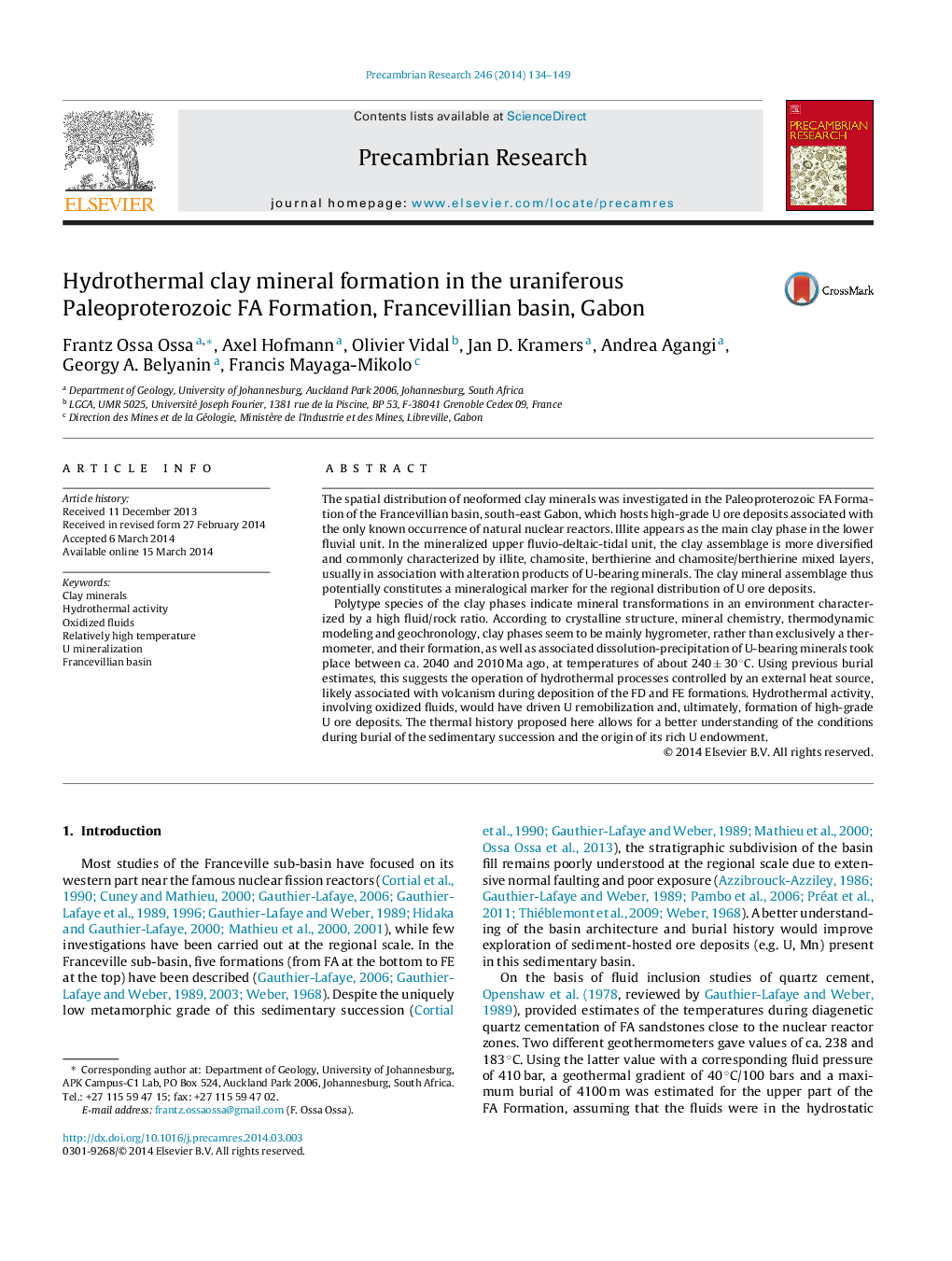| Article ID | Journal | Published Year | Pages | File Type |
|---|---|---|---|---|
| 6442289 | Precambrian Research | 2014 | 16 Pages |
Abstract
Polytype species of the clay phases indicate mineral transformations in an environment characterized by a high fluid/rock ratio. According to crystalline structure, mineral chemistry, thermodynamic modeling and geochronology, clay phases seem to be mainly hygrometer, rather than exclusively a thermometer, and their formation, as well as associated dissolution-precipitation of U-bearing minerals took place between ca. 2040 and 2010 Ma ago, at temperatures of about 240 ± 30 °C. Using previous burial estimates, this suggests the operation of hydrothermal processes controlled by an external heat source, likely associated with volcanism during deposition of the FD and FE formations. Hydrothermal activity, involving oxidized fluids, would have driven U remobilization and, ultimately, formation of high-grade U ore deposits. The thermal history proposed here allows for a better understanding of the conditions during burial of the sedimentary succession and the origin of its rich U endowment.
Keywords
Related Topics
Physical Sciences and Engineering
Earth and Planetary Sciences
Geochemistry and Petrology
Authors
Frantz Ossa Ossa, Axel Hofmann, Olivier Vidal, Jan D. Kramers, Andrea Agangi, Georgy A. Belyanin, Francis Mayaga-Mikolo,
